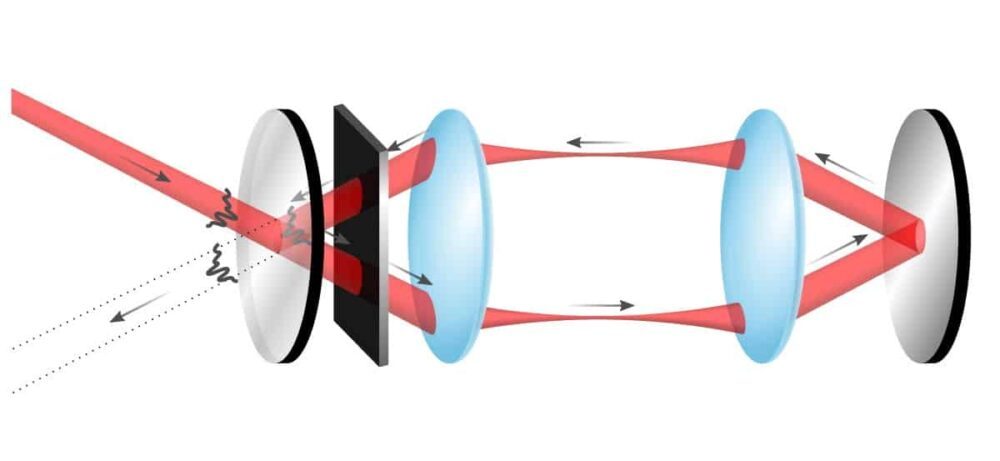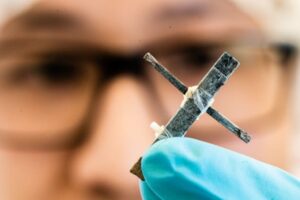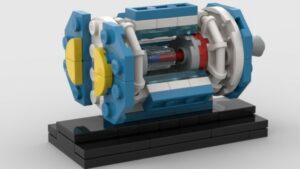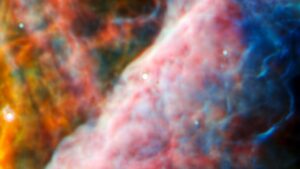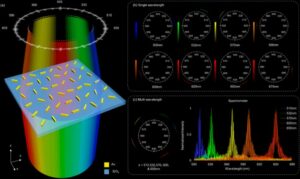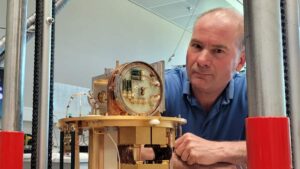Physicists in Austria and Israel say they have developed an “anti-laser”, or “coherent perfect absorber”, that can enable any material to absorb all light from a wide range of angles. The device, based around a set of mirrors and lenses, traps incoming light inside a cavity and forces it to circulate so that it hits the absorbing medium repeatedly, until completely absorbed. This has the potential to improve various light harvesting, energy delivery, light control and imaging techniques.
The absorption of light is important in many natural processes, ranging from vision to photosynthesis, as well as in physics and engineering applications such as solar panels and photodetectors. Techniques to enhance light absorption in order to boost the efficiency and sensitivity of light-based technologies are highly sought after, but this can be challenging.
Stefan Rotter, a theoretical physicist at TU Wien, explains that it is easy to trap and absorb light with a bulky solid object, like a thick black woolly jumper, for instance. But most technical applications use thin layers of material. While these thin materials absorb some light, large parts of it pass through.
One reason that owls and other nocturnal animals have such good night vision is that they have a layer of reflective tissue, called the tapetum lucidum, behind their retina. Any light that passes through the thin retina without being absorbed gets bounced back and has a second chance to be captured. To improve such a system further you could add another reflective surface in front of the retina. Light would then bounce back and forth between the two mirrors, passing through the light absorbing surface multiple times. But it isn’t quite that simple.
For such a device to work, the front mirror cannot be perfectly reflective. It needs to be partially transparent so that light can enter the system in the first place. But then as the light bounces between the two mirrors some of it will be lost through the partially transparent mirror. When researchers tried to replicate such set-ups they found that they only work for specific patterns of light. While certain modes of light become trapped, repeatedly hitting the absorbing surface, other light, for instance entering the device at a different incidence angle or having a different wavelength, escapes.

Now Rotter and his colleagues, also from The Hebrew University of Jerusalem, have demonstrated that a much more efficient light trap can be created if two lenses are placed in between the two mirrors.
The lenses are designed to guide the light so that it always hits the same spot on the mirrors. The interference effect that this creates prevents light from escaping through the partially transparent front mirror. Instead, it becomes trapped in the system.
“In practice, our design traps incoming light inside a cavity and forces it to circulate in a cavity, hitting the weakly absorbing sample again and again until it is perfectly absorbed, and all reflections are coherently destructively eliminated,” Rotter explains to Physics World. He describes the system as working like a laser in reverse. “Instead of having a laser gain medium convert electrical energy into coherent light radiation, our ‘time-reversed laser’ absorbs coherent light and converts it to thermal energy – and possibly in the near future to electrical energy.”
The front mirror in the researchers’ experimental set-up had a reflectance of 70%, while the back mirror had a near-perfect reflectance of 99.9%. For the light absorbing medium they used a thin piece of tinted glass with an absorption of around 15% – around 85% of light passes through it. They found that their device enabled the colour-glass to absorb over 94% of all light that entered the system.

Anti-reflection coating allows perfect light transmission
The researchers also used a number of techniques to create rapidly changing, complex and random light fields. Even with these dynamic variations in the light source their coherent perfect absorber still enabled near-perfect absorption, they claim.
Rotter tells Physics World that their device has potential in a wide range of applications, particularly around optical energy harvesting and transmission. For instance, he says it might be possible to use it to charge the batteries of a drone from a large distance using a laser beam.
The researchers describe their work in Science.

